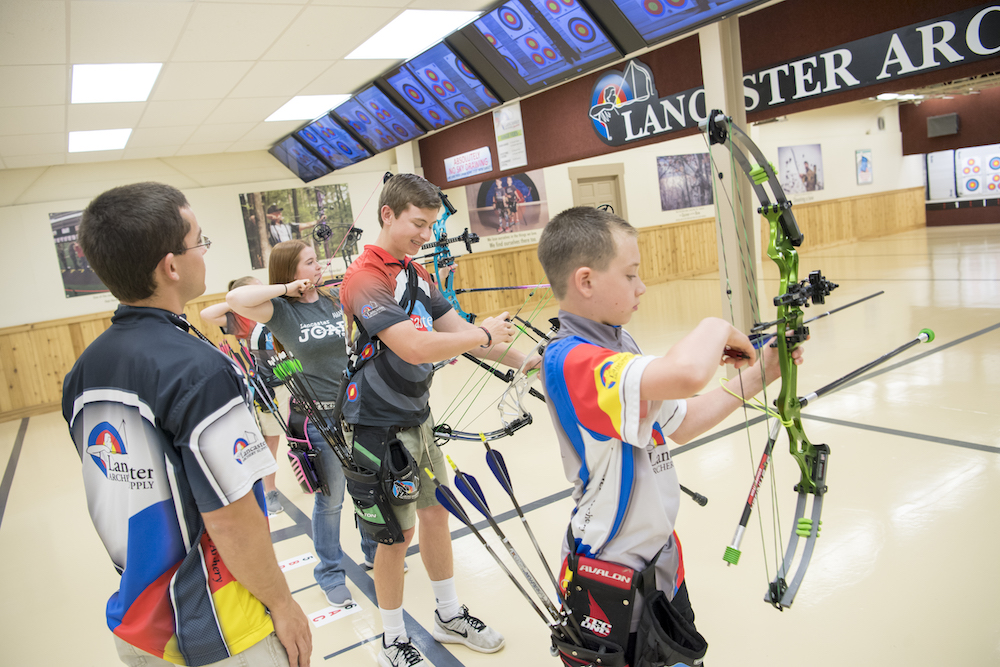Practice makes perfect, right? The correct answer to this is “yes.” But is it possible to practice too much? The short answer to that is also “yes.” When preparing for a competition, how an archer practices is more important than how much. Just shooting arrows is definitely beneficial, but there is a science behind how much you should shoot and at what level of intensity your practice should be depending on whether you are pre- or post-competition or in the offseason.
Shooting arrows and getting in the “reps” is advantageous to archers, especially in developing form and technique. Repeating the same actions over and again trains the muscles and mind to execute the shot subconsciously. That is the goal of every high-level archer; giving yourself too many instructions while competing isn’t normally a good thing. Olympic archers will shoot as many as 2,000 to 3,000 arrows in a week as part of their training so when the pressure is on, they have absolute trust in themselves and their process to execute the shots they need to hit the 10-ring.
Does that mean you need to be shooting 3,000 arrows per week? Probably not.
Periodization Training

Serious and competitive archers will always want to practice shooting, and they will want to have training sessions of 200 to 400 arrows, depending on where they are in their competition season. They won’t always shoot the maximum number of arrows that they can handle, but they will follow specific routines of how many arrows to shoot each day in the lead-up to their next big competition. This is called periodization training. Periodization refers to the raising and lowering of an archer’s arrow volume in order to achieve on-demand peak performance at a specific time or event. Without this, elite archers would suffer burnout and would not be able to endure an entire outdoor competition season that can last for several months.
Too much archery practice can lead to a myriad of problems, and the most common problem is repetitive use injuries. The repetitive motion of shooting a bow, combined with the one-sidedness of only pulling with your dominant side, can give you muscle or tendon strain that can take a while to heal. Knowing your limits with practice can help you avoid injury. Eager archers often want to increase their arrow volume in practice sessions too aggressively and too quickly, say, by jumping from 150 arrows one day to 300 the next. While some people can handle doing this, the majority of archers cannot. It is smarter to increase arrow volume a little at a time so your body doesn’t get a shock when too many arrows are shot in a single session. If you want to start bumping up your volume, a methodical procedure is the better way to go. For example, start with an arrow volume of 150 and stay there for several practice sessions. Then increase by 10% to 165 arrows per session for several sessions, and repeat. By following a similar process, you reduce the chances of injury in your shooting muscles while steadily increasing the volume of practice.
Giving yourself days off is also highly recommended to avoid practicing too much and giving yourself an injury. Most high-level Olympic archers take scheduled days off during their week to allow their bodies time to recover. As an example, the Dutch team takes the weekends off or does a very light volume of 100 arrows on either Saturday or Sunday (yes, 100 arrows is a small amount for those archers). The Turkish team trains for two weeks and then takes a day or two off, depending on where they are in the season. You will be able to find your limit of how much shooting is too much and devise a schedule to suit your needs.
Make sure that you don’t just shoot, but try to be active in other ways. If you want to stay in archery for a long time, you should take the time to keep yourself healthy and active. A balanced body will lead to fewer problems that can arise from the one-sided aspect of archery. Learn your own practice thresholds and you’ll be training — not overtraining — like the pros.




